Steering pick-up, rebound damping, pedal weights: they’re the kind of marginal elements that tend to determine the outcome of head-to-head tests between two very similar performance cars. And with the best car makers striving to make small gains, that’s as it should be.
But this isn’t necessarily going to be one of those tests, mostly because the electric Porsche Porsche Taycan Cross Turismo and the Alpina B3 Touring could hardly be further apart in their hardware. However, they’re aligned in price and on-paper performance. More importantly, they share an identical use case. That means they’re crying out for a comparison test, just one with a bigger picture than usual. Today is therefore about old world versus new school, comfort food versus molecular gastronomy, petrol versus electric, and here’s the best bit. Both the B3 Touring and the Taycan saloon are rare five-star cars, so together these machines represent not only the very highest standards but also the best possible test control variable. So where does the EV-curious enthusiast who wants their car to be all things put their (serious) cash in 2021?

The B3 barely needs any introduction. This is the only Alpina ever to use a bona fide BMW M division engine, and if you were to set out its various attributes – for performance, comfort, handling and efficiency – you’d end up with a spider chart whose plotted points were falling off the edges in every direction. It’s the rapid estate of the moment, softer and more serene than an BMW M3 (whose BMW M3 Touring derivative is imminent) but no slower on the road, and in light of that, £67,950 doesn’t look too wild.
This car is also spacious but not at all big-boned on B-roads, and inside it’s lavish yet the snarling alter ego always lurks. You can quite easily peel back the stability of the chassis and play with the thing almost as if it were a proper sports car. Team ICE could hardly have a better all-weather, all-chore, all-singing-and-dancing real-world rep.

As for the opposition, the regular Taycan 4 Cross Turismo would have been our first choice for this test, rather than the Porsche Taycan 4S Cross Tursimo. But that’s only because, at £81,500, the entry-level 4 costs almost exactly what the average B3 Touring owner spends after options. The £88,270 4S will nevertheless be fine for today’s purposes. With 563bhp rather than 469bhp, it’s a little quicker than the 4, but both cars possess the same balance and feel and roundedness that make the Taycan our favourite-ever EV and a sweetly judged performance car in its own right. The Cross Turismo-specific extended roofline and wheel-arch cladding also give this Ice Grey Taycan undeniable kerbside appeal – enough to shade the taller, narrower Alpina, even with its draping chin spoiler, quad exhausts, trademark forged 20in wheel multi-spokers and gorgeous Alpina Blue paint. You’d be delighted to have either on your driveway, mind.
Briefly reacquainting myself with the Taycan, I’m struck by how much it feels like a Porsche first and an EV second. The driving position is faultless, being low and, with no lump of aluminium ahead, perfectly aligned and generously long of leg. The weight of the electrically assisted steering, which works the front axle alongside double-wishbone suspension, also gives you something to lean on, and is crisp and consistent and also feelsome, not just in the subtle ebb and flow of weight but in how it conveys incidental road-surface chatter, too. It’s all so Porsche. Now that the post-launch wow factor has dissipated, you can see the digital-heavy cabin for what it is: too business-like and a touch cold in material terms. But it nevertheless sets a secure and sporting tone, with superb visibility just over the top of this car’s Alcantara-clad steering wheel and fine all-round ergonomics. It all feels right.

Really get going and the thoroughbred theme continues. All Taycans use three-chamber air suspension and the weight of the battery must mean it’s really exerting itself much of the time, but you’d rarely know it. The giveaway is that while the ride is mostly pliant, body control is never anything less than tight. It gives the car awesome composure, but it’s why the Taycan sometimes struggles to establish much in the way of flow on twistier routes. It prefers big-radius sweepers, which it devours in one clean scythe.
Admittedly, this example lacks the full five-grand impact of Porsche’s arsenal of optional chassis tech: rear-axle steering, torque vectoring and active anti-roll bars. I suspect the back-end steering would make it noticeably keener and more sprightly, and the torque vectoring might give you 5% more agility on top, especially on the way into corners. I’ll be damned if the roll bars make any difference on the road, though. With the air suspension in ‘Low’, and the beefy arches all but grazing the tops of the tyres, the Cross Turismo doesn’t exactly do ‘roll’. You feel its low centre of gravity in everything it does, and everything it does is polished to a shine.

Moving on to the Alpina, whose cabin instantly feels more inviting than that of the Porsche but lacks the near-flawless driving position, setting the driver higher and more upright. In general, this car seems more of an ordinary device elevated to special standards, rather than a device conceived to be special from the get-go, like the Taycan is.
Still, with the B3 Touring, the elevation process is quite something. Alpina takes the BMW M340i Touring, installs its own torque-rich version of M’s new 3.0-litre S58 twin-turbo straight six and adds copious extra cooling for both the engine and the gearbox, with the latter being reinforced, along with the rear driveshafts. The electronically controlled LSD in the rear axle is retuned, and the torque split between the axles is made more equal (surprising, that). The B3 also gets its own ALPbranded Pirellis, and the suspension geometry is tweaked to give a touch more steering feel and directional stability. The list of changes is long and detailed, but the result is something unlike any mainline BMW, and something with Porsche levels of diligence lavished on its chassis and engine.
Yes, that engine. This car starts with a fruity straight-six boom, woofly but somehow clean cut and M flavoured yet not full-monty M. Clearly, the machine element is more tangible here than with the Porsche. Obvious, really, but no less significant. At idle, the engine sends vibrations through the chubby-rimmed steering wheel, and whether you’re pulling away or indulging in roll-on acceleration in third gear, there’s that almost reassuring sense of hysteresis as torque rapidly works its way from the crank, through the gearbox, then mostly along the car’s propshaft and into the rear tyres, which being 265 section are fairly serious but still some way off the Porsche’s 285-section Michelins. Where that car keeps its powder dry until the precise moment you plant the accelerator, the B3 seems to ripple more wastefully with horsepower and torque before its healthy 456bhp and enormous 516lb ft begin to register. It simply can’t keep schtum.

After the Porsche, what’s also satisfying is how light the Alpina feels. Which is completely ridiculous because, including driver and fuel, it’s getting on for two tonnes. It’s a mark of just how heavy the Taycan is that the B3 feels so eager to change direction by comparison, and almost flighty and wayward in its lighter (and conspicuously less communicative) steering as you reacclimatise to something that doesn’t weigh as much as a Range Rover. Frankly, Porsche has performed a miracle with the Taycan, because that car has real balance and good agility, but there’s just no substitute for having less weight to haul.
There’s a pointed difference in straight-line speed, too. With motors on each axle, the 563bhp Porsche attacks sharply and in Sport Plus the throttle response is truly rude, but the rate of acceleration quickly plateaus and begins to diminish thereafter. It’s impressive but not breathtaking. The Alpina does the opposite. It seems to shuffle its hips for a moment as it secures the right cog from within its eight-speed ZF ’box, and then there’s more delay as the turbochargers’ boost pressure builds. Only now does it absolutely hurl itself forward, right on the limit of traction, even with the four-wheel drive. The ferocity of the event then somehow increases as the revs climb. Lift off, let the scenery un-blur itself, and you might even hear a distant crack of thunder from the exhaust on the overrun – not very Alpina, but if that doesn’t turn up the corners of your mouth…
After the refreshing directness of the Porsche, it also feels good to engage with a gearbox again. Yes, the Taycan is more characterful than most EVs in this sense because you can feel the two-speed gearbox dropping into its lower ratio when you up the ante, but that’s no substitute for multiple ratios, shift paddles and a prominent rev counter.

So the Alpina has greater agility, more obvious mechanical involvement and the greater sense of occasion. But the Porsche is more transparent and composed and feelsome, and it keys the driver into the road more directly. And while the Porsche is also marginally the slower of two (it might skewer its rival during the first few metres of all-out acceleration, but once the B3’s turbos are on song, the rocket from Buchloe is gone), it’s probably the more confidence-inspiring car for fast-ish road driving day to day. It’s the more relaxed and refined cruiser, too, thanks in no small part to its powertrain. Surely, then, in the ‘performance estate’ spirit of circumspection and roundedness, it wins this dual-powertrain contest?
Well, not so fast. At the risk of painting myself into the pernickety corner outlined at the start, there’s a small but significant final card the Alpina can play, and it plays it well.
It comes back to weight. So heavy is the Taycan Cross Turismo that Porsche has been obliged to set up the handling characteristics a little too conservatively. Drive in to a corner and there’s some initial dead travel at the top of the brake pedal that gives you a fleeting heart-in-mouth spike as you realise your actions have done little or nothing to diminish the car’s wrecking-ball momentum, although that’s not the main problem, only a small wrinkle. With a little more pressure, the 4S slows and slows quickly on its cast-iron brakes.

The problem is the car’s lack of adjustability. It’ll tighten its line fractionally with a lift of the accelerator, mid-engine style, but is unreactive to any attempts to use weight transfer to usefully adjust its angle of attack through corners. And the same is true even for subtle commands and if you throw the kitchen sink at the tyres. All you get is total neutrality, then gentle understeer, and the chassis must be set up to deliver this kind of handling because the stakes are so high, should all that mass get out of control. The Taycan is so level-headed that it’s borderline repressed, and that makes it also just a little one-dimensional when you do find that lovely cross-country route.
In contrast, the B3 is happy to fool around, if you’d like it to, and especially so when you’ve got the DSC system in its more lenient halfway mode. Like the Porsche, it is a natural understeerer, but what’s surprising is just how easy it is to get beyond that, almost as if the development team planned it that way. You can usefully loosen the back end on the brakes, then pick up the throttle early and the car will adopt some angle, minuscule or otherwise, with ease and security. The B3 is unexpectedly instinctive in this respect – as Steve Cropley would put it, ‘someone’s been here before’ – and even if you never get to the point where you actually have to put some correction into the steering, you can always still sense the latent playfulness and fluency inherent in BMW’s fine chassis, honed by Alpina. I know, it all sounds a little niche, but it’s the difference between a Porsche that’s hugely impressive and a wonderful early EV benchmark, and a car that you can truly engage with. And so much of that difference in character surely comes down to the 400kg penalty the Cross Turismo bears, and the substantially larger contact patches it must subsequently use, and the no-nonsense chassis balance. It’s more ‘slow in, fast out’, while the Alpina can do ‘fast in, fast out’.

In the end, the Alpina claims victory. It’s less refined than the Porsche and lacks that car’s supreme sense of precision and linearity and composure at seven- or eight-tenths, but the difference isn’t night and day and the B3 pays you back with greater dynamism when you’re on a charge and, sorry but it’s simply undeniable, with more soul. Despite the Turismo’s larger footprint, the ICE car also has the bigger boot, and more generous rear leg room, each small victory coming on account of the fact it doesn’t need to house an enormous battery along the floorpan. But mostly, while the Taycan Cross Turismo is magnificent, and an encouraging car in so many ways, it lacks the vivacity required to really get under your skin.

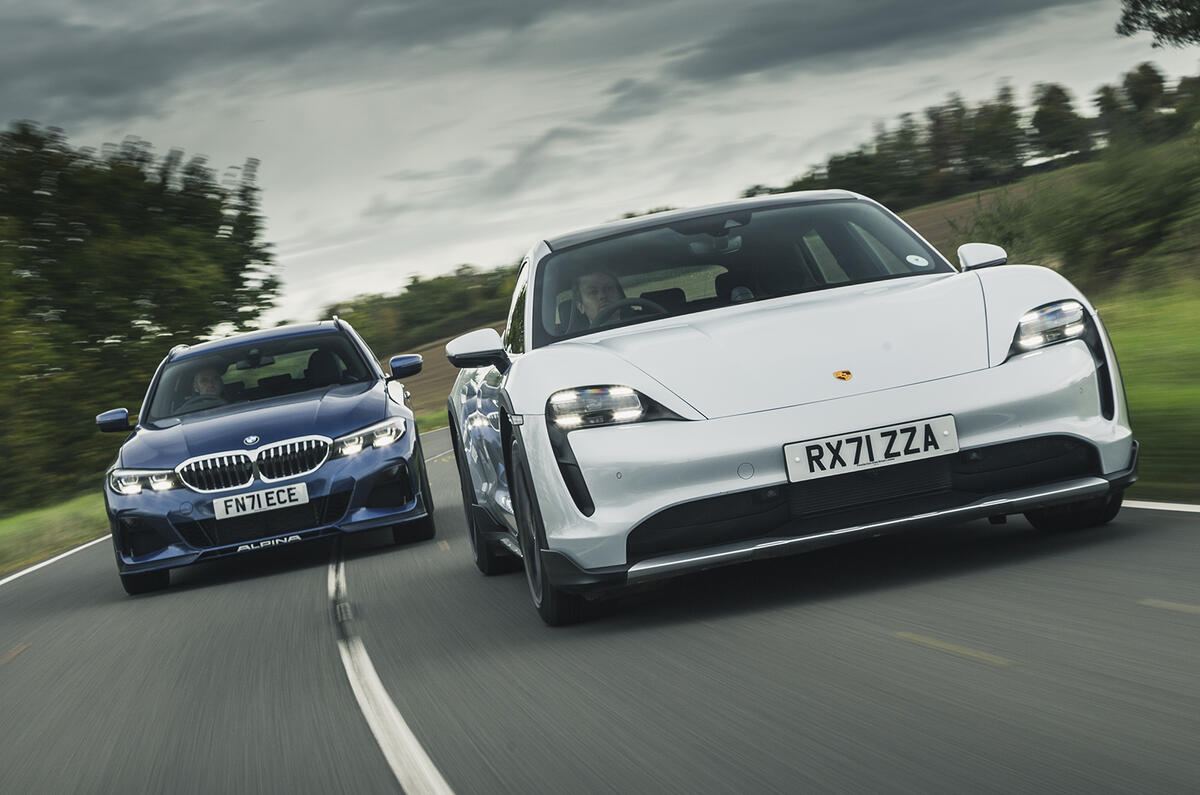
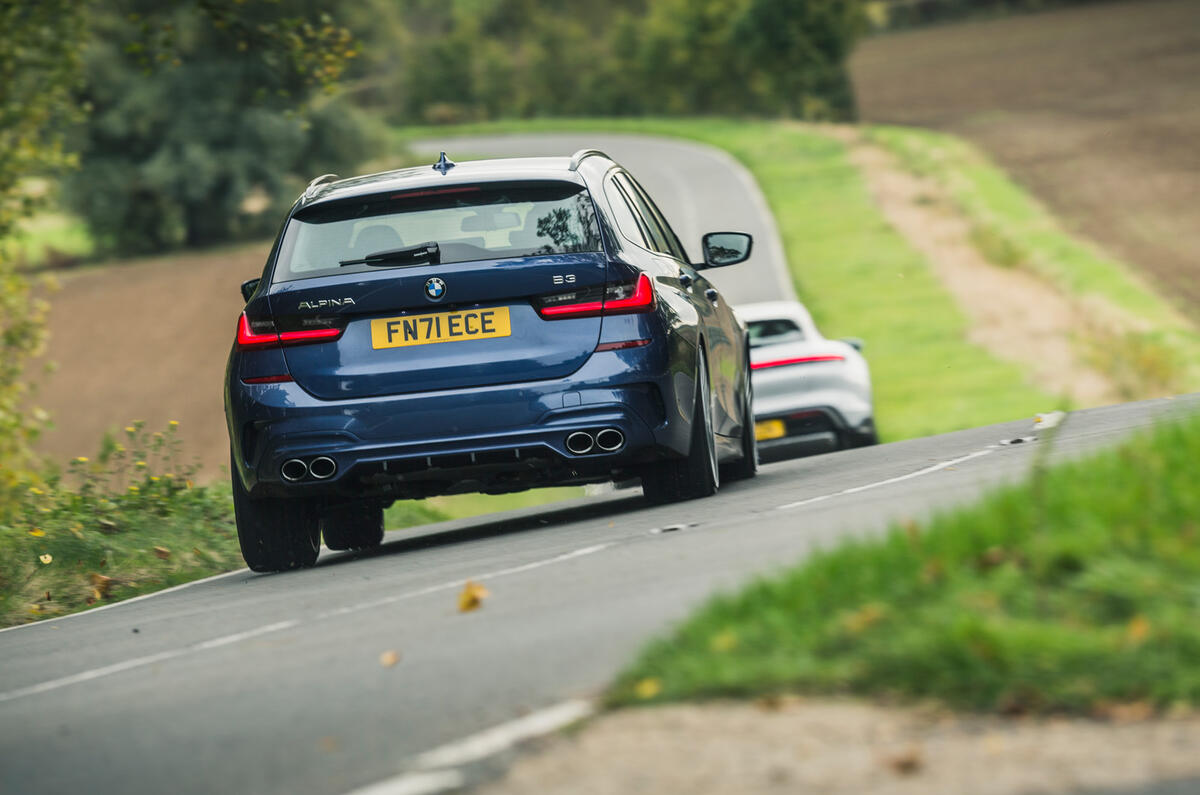
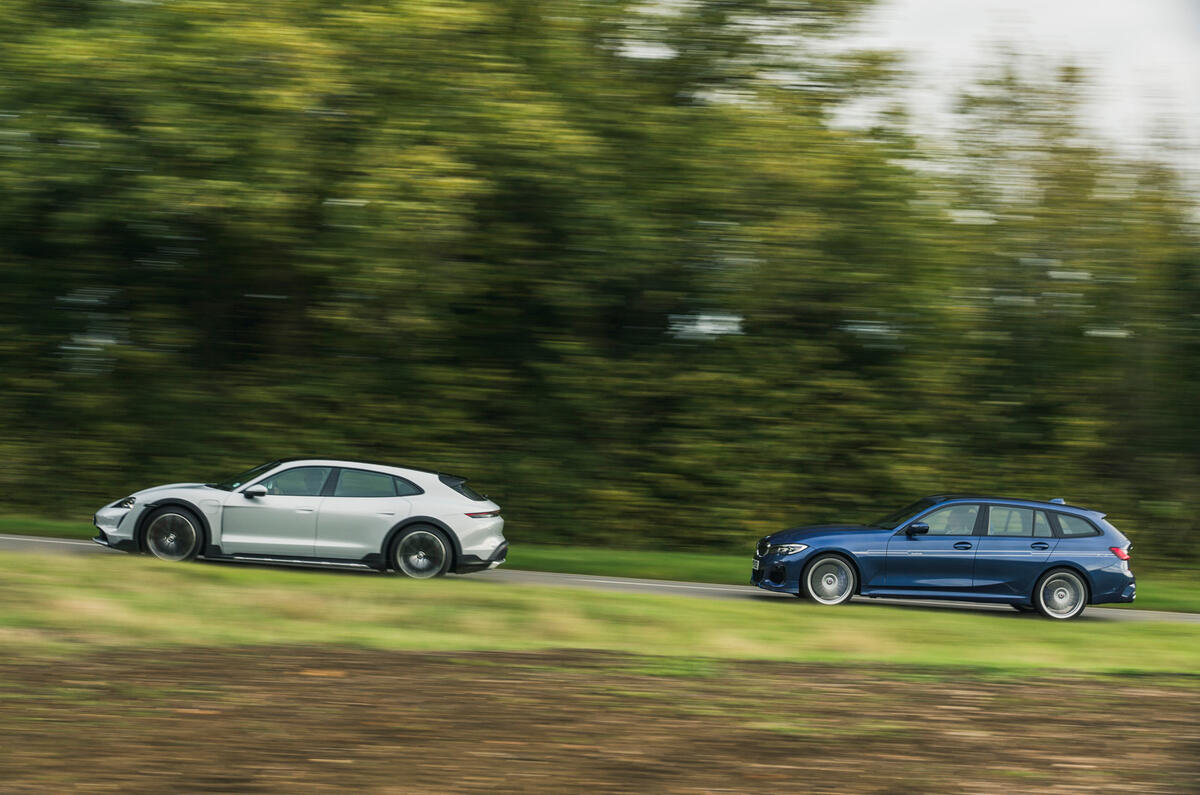
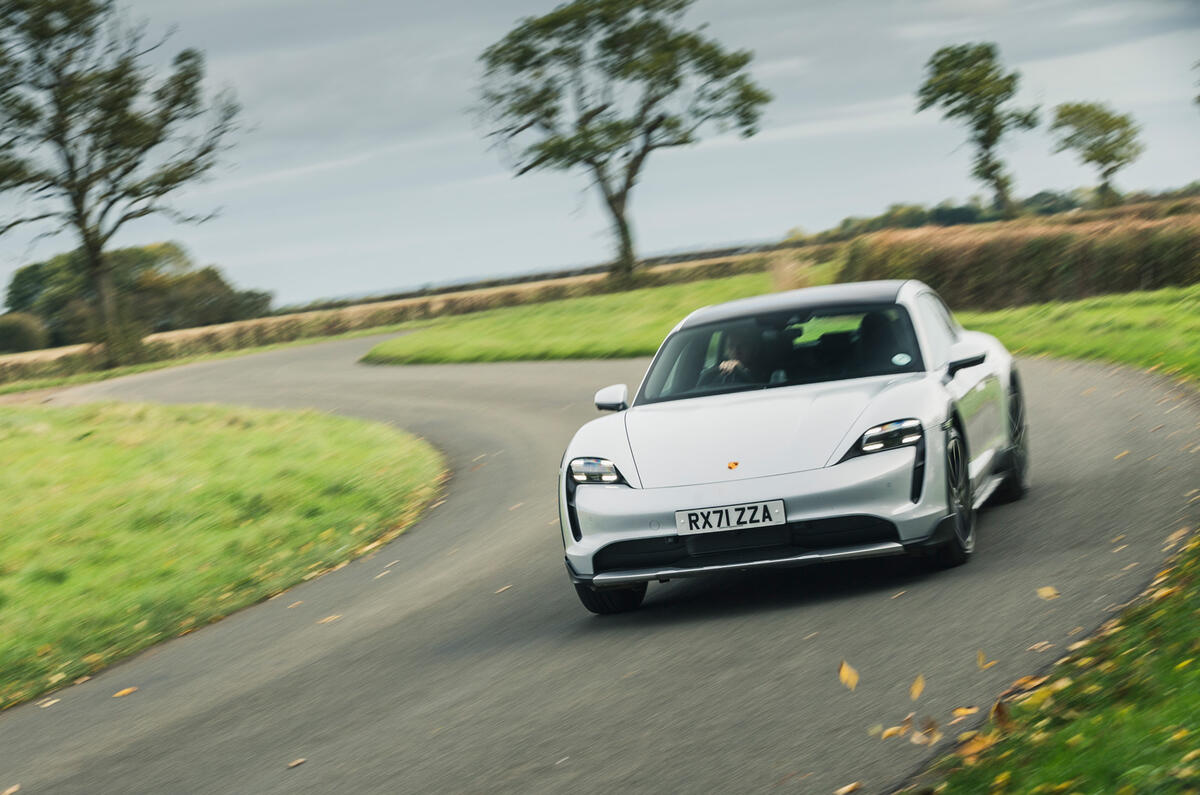
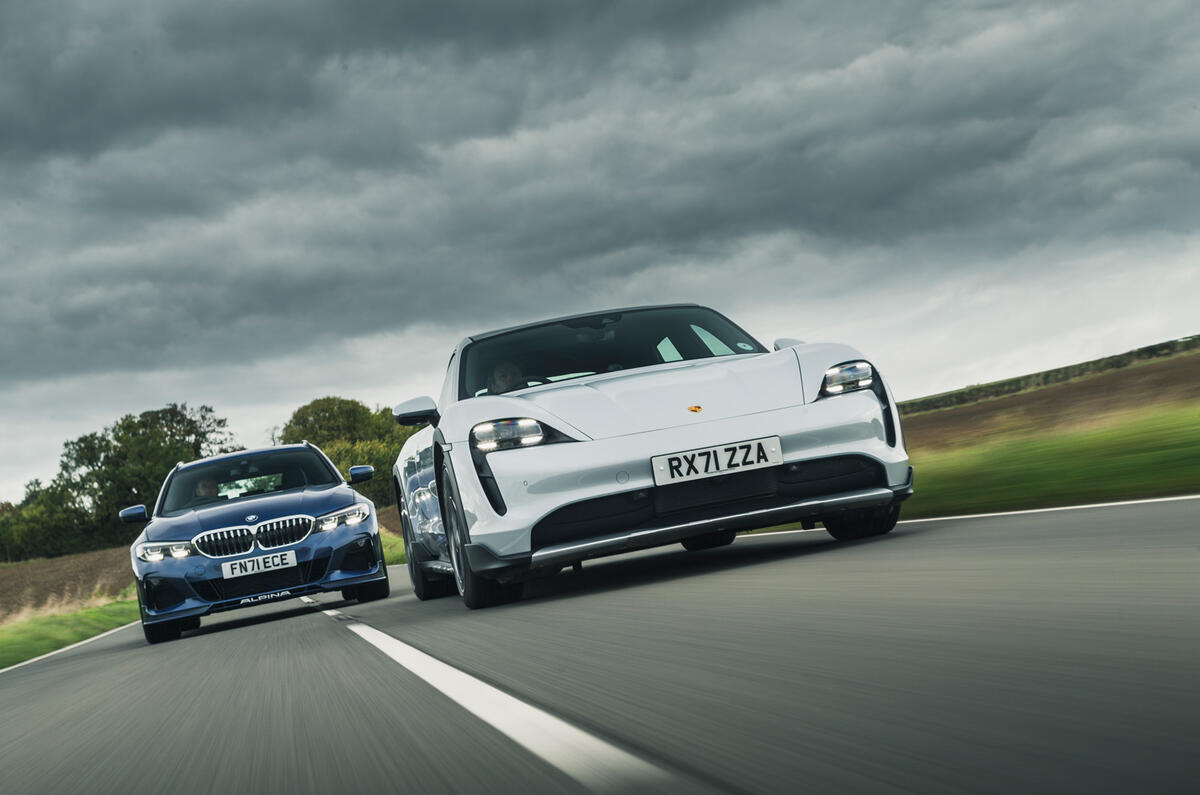
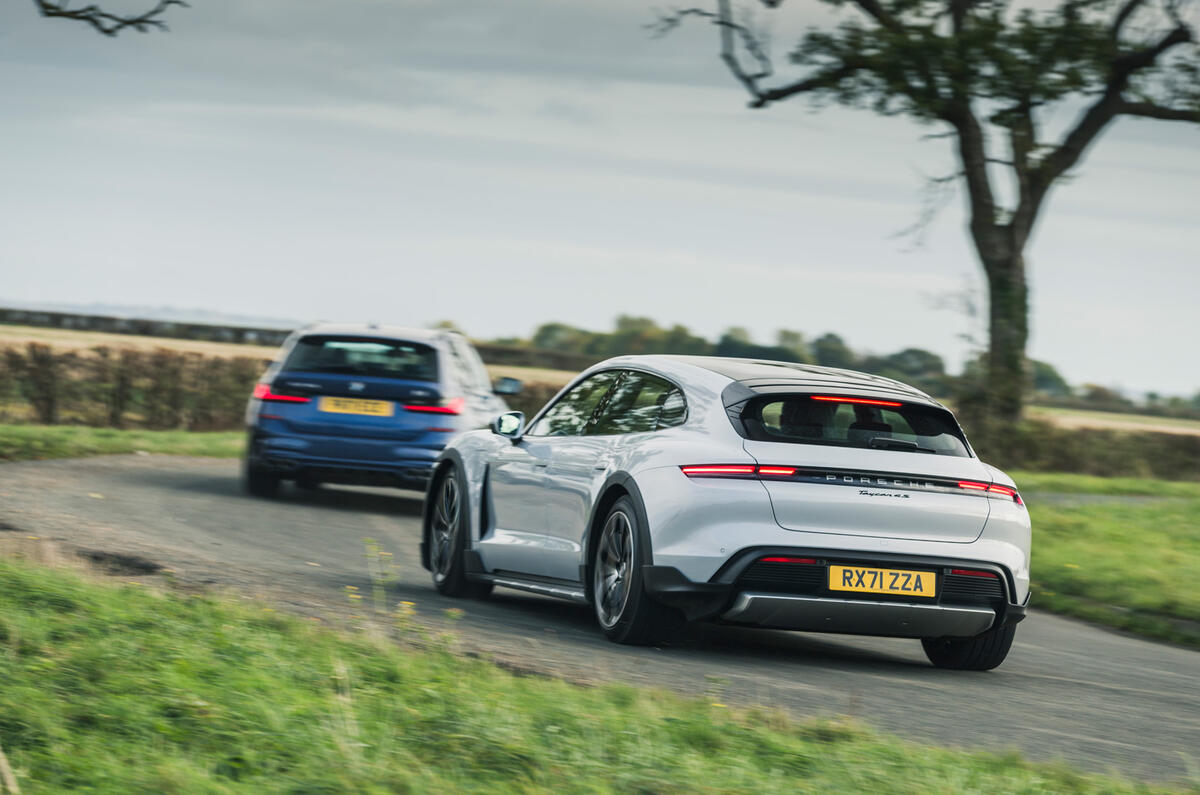
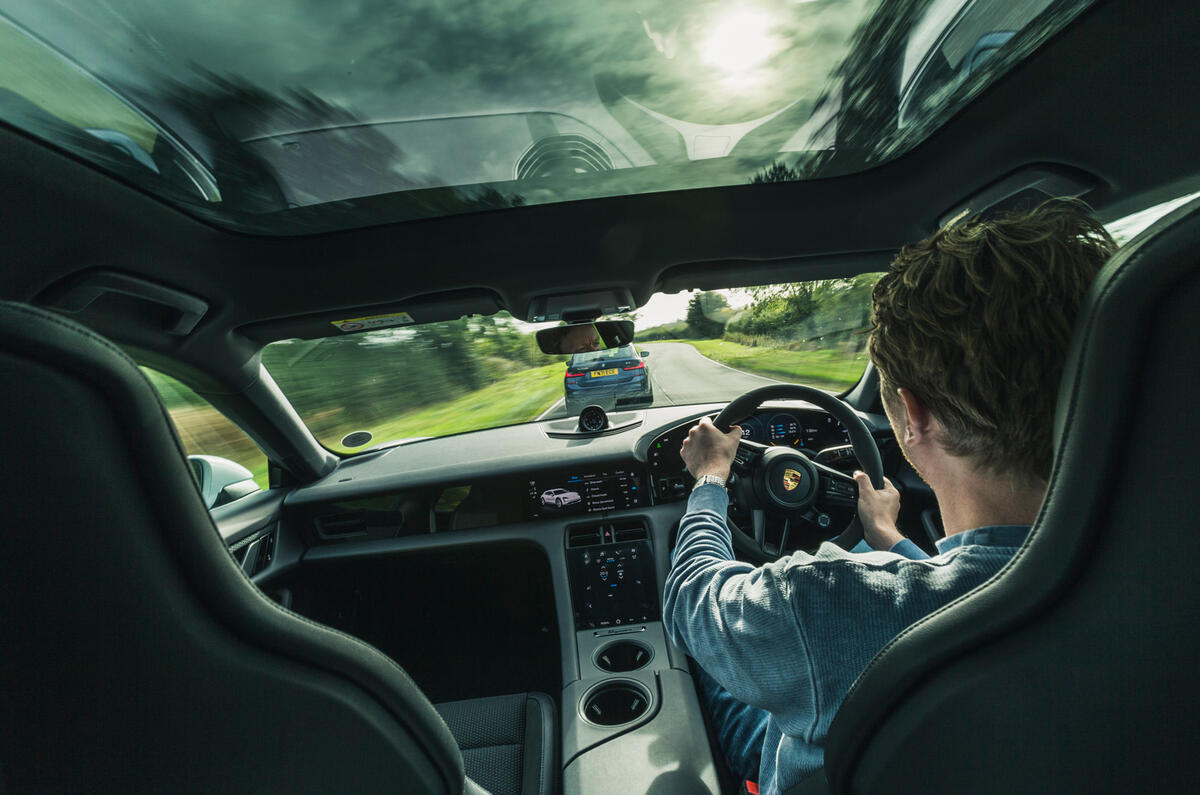
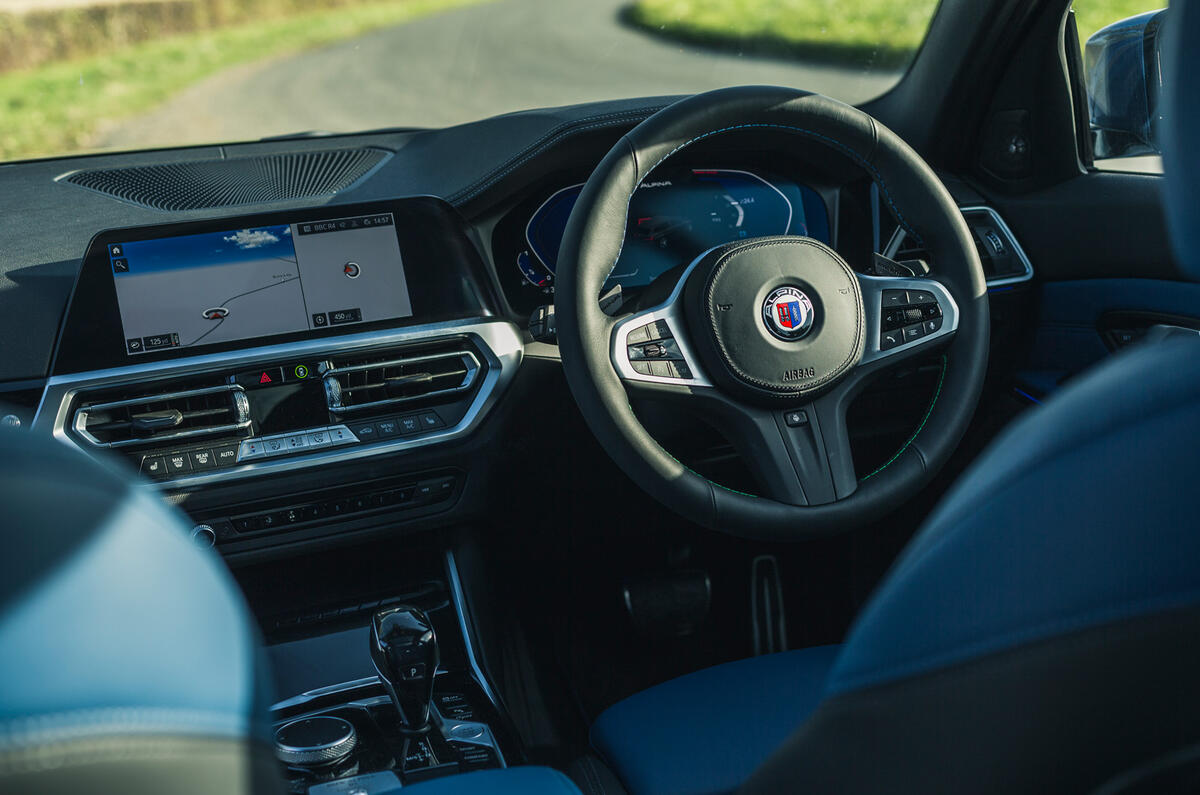
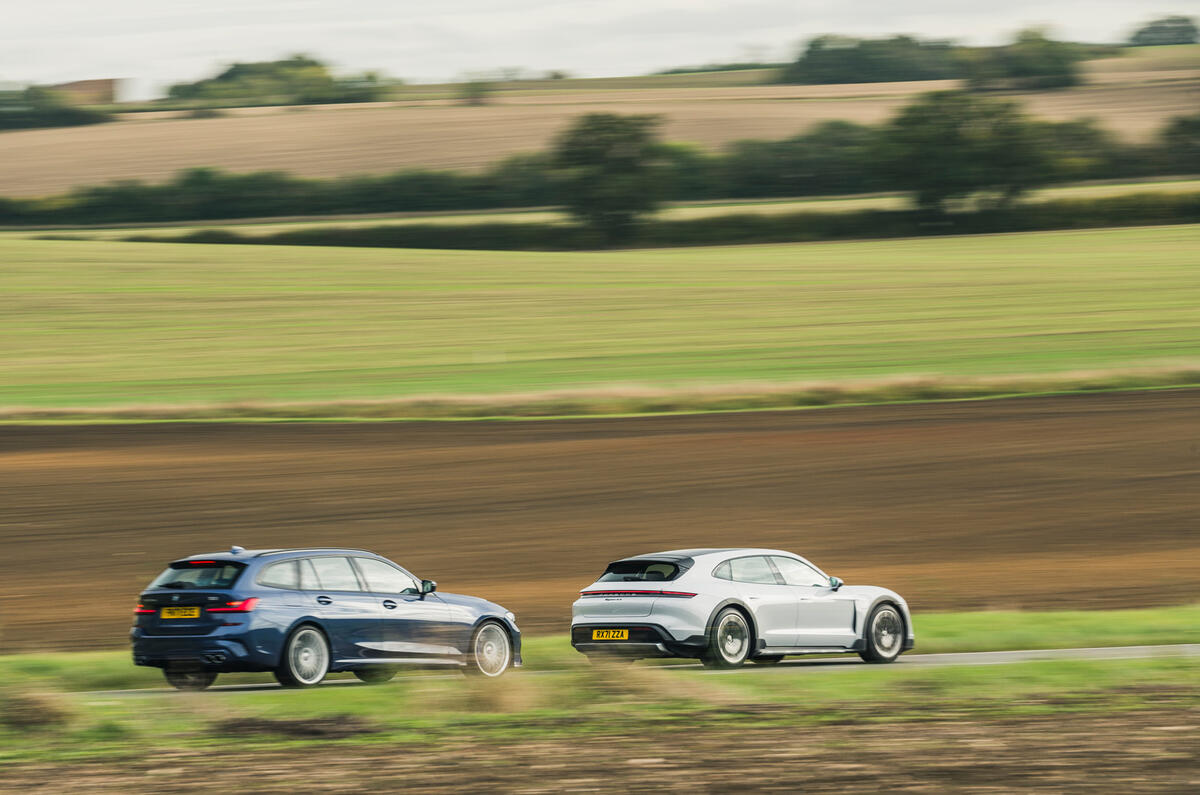
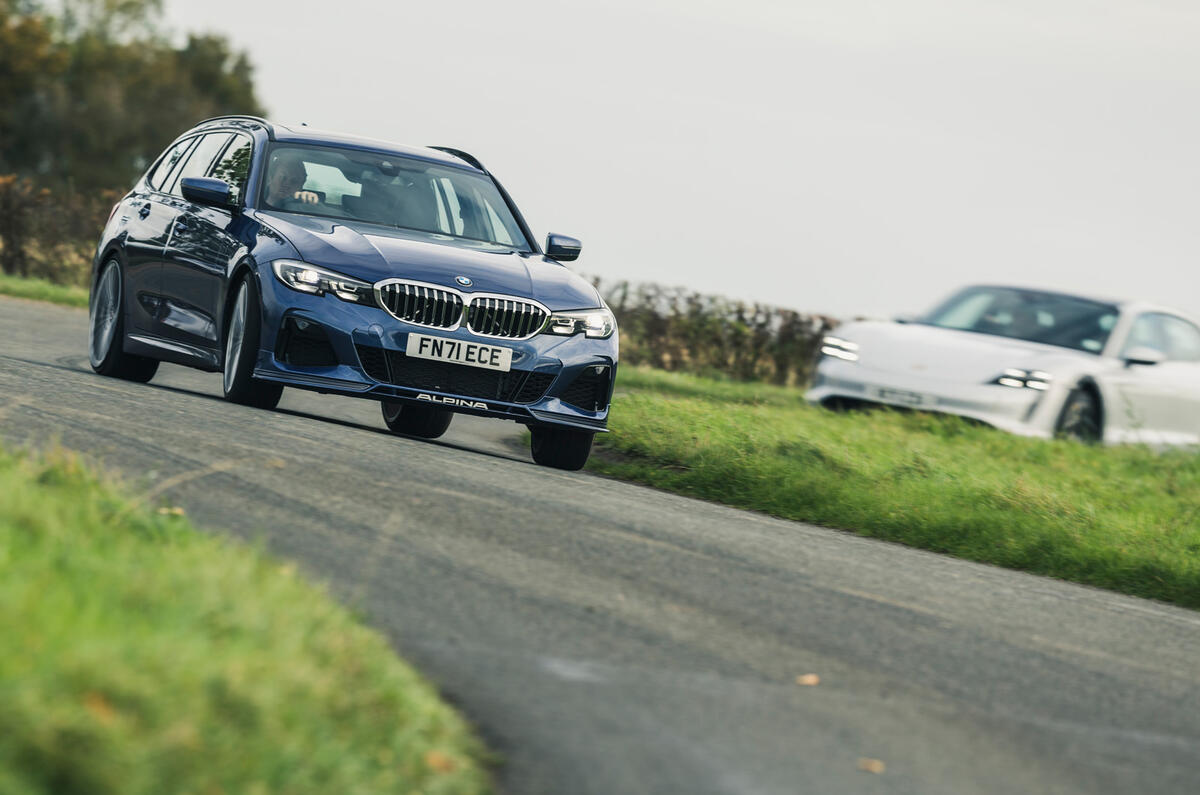
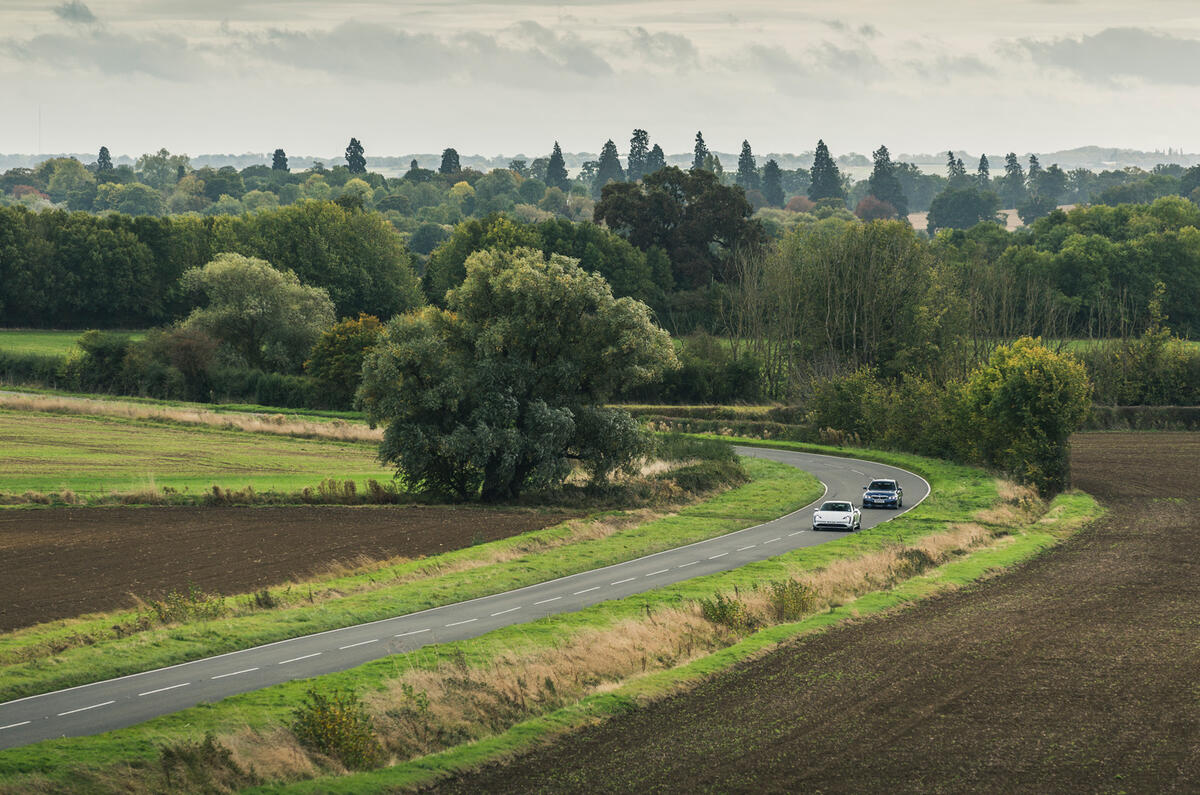
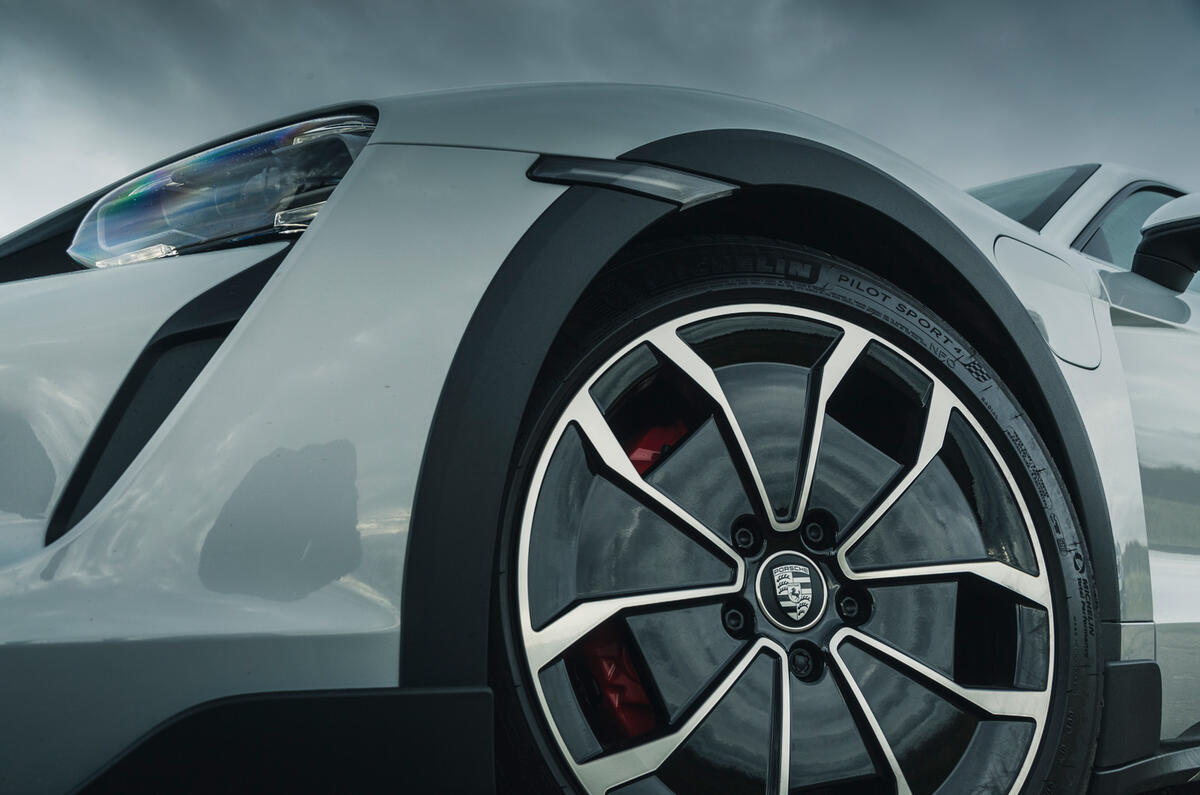
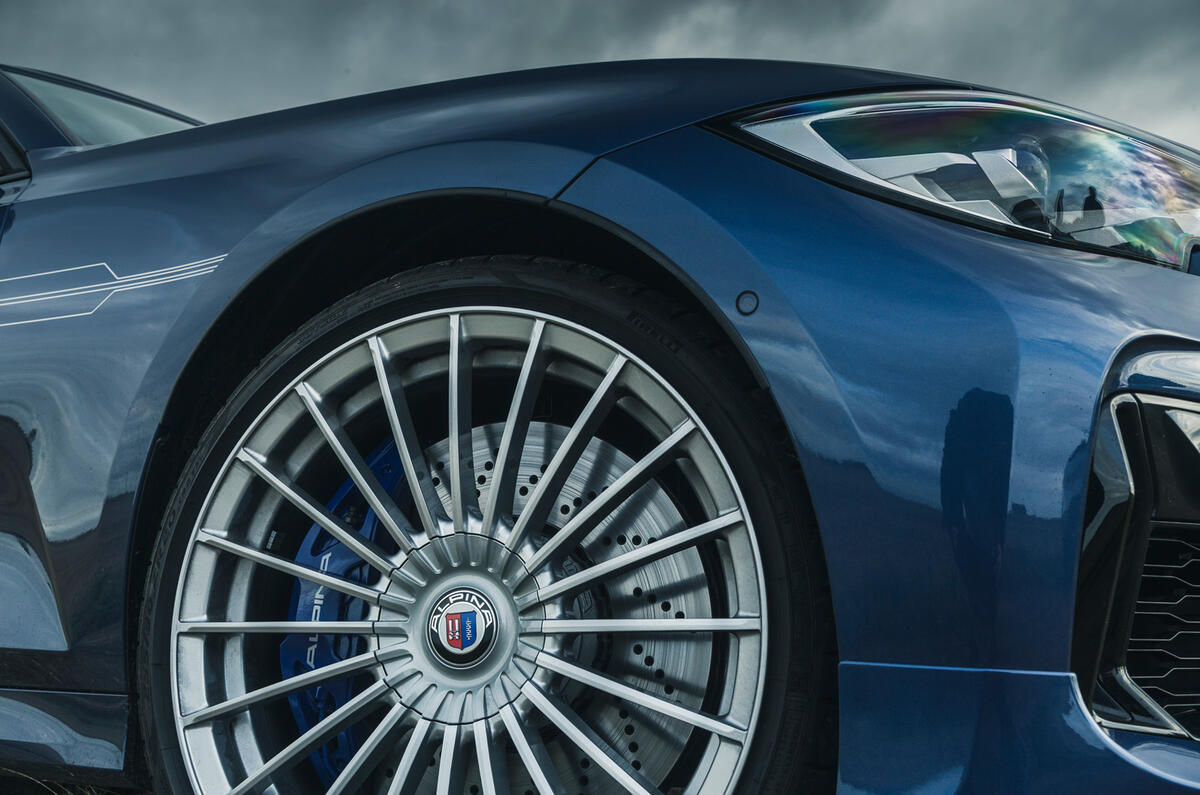
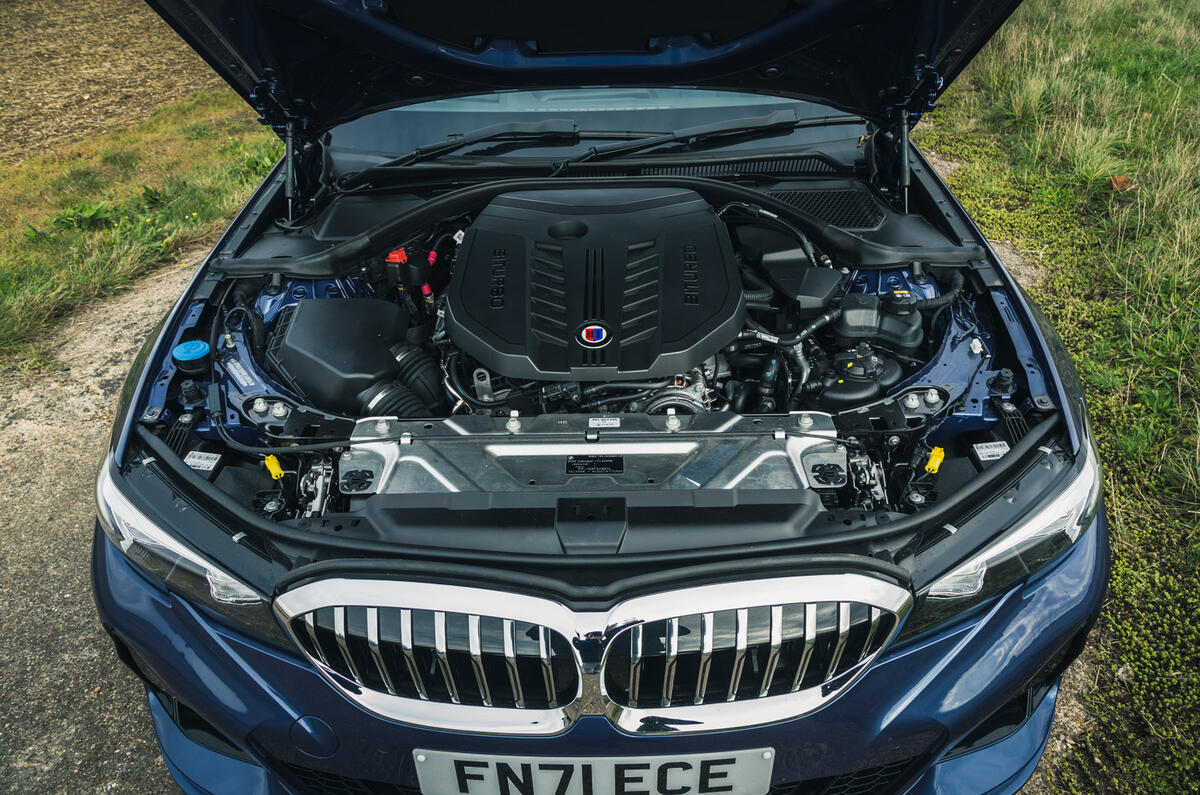
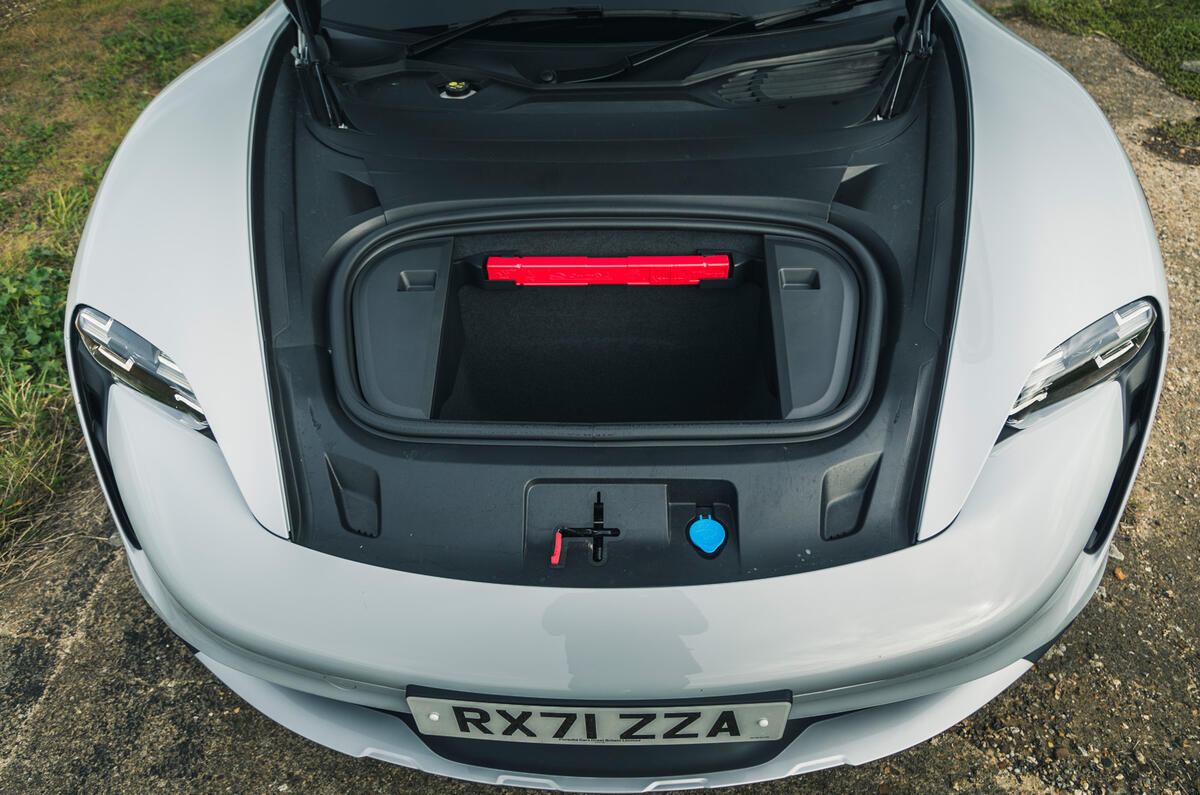
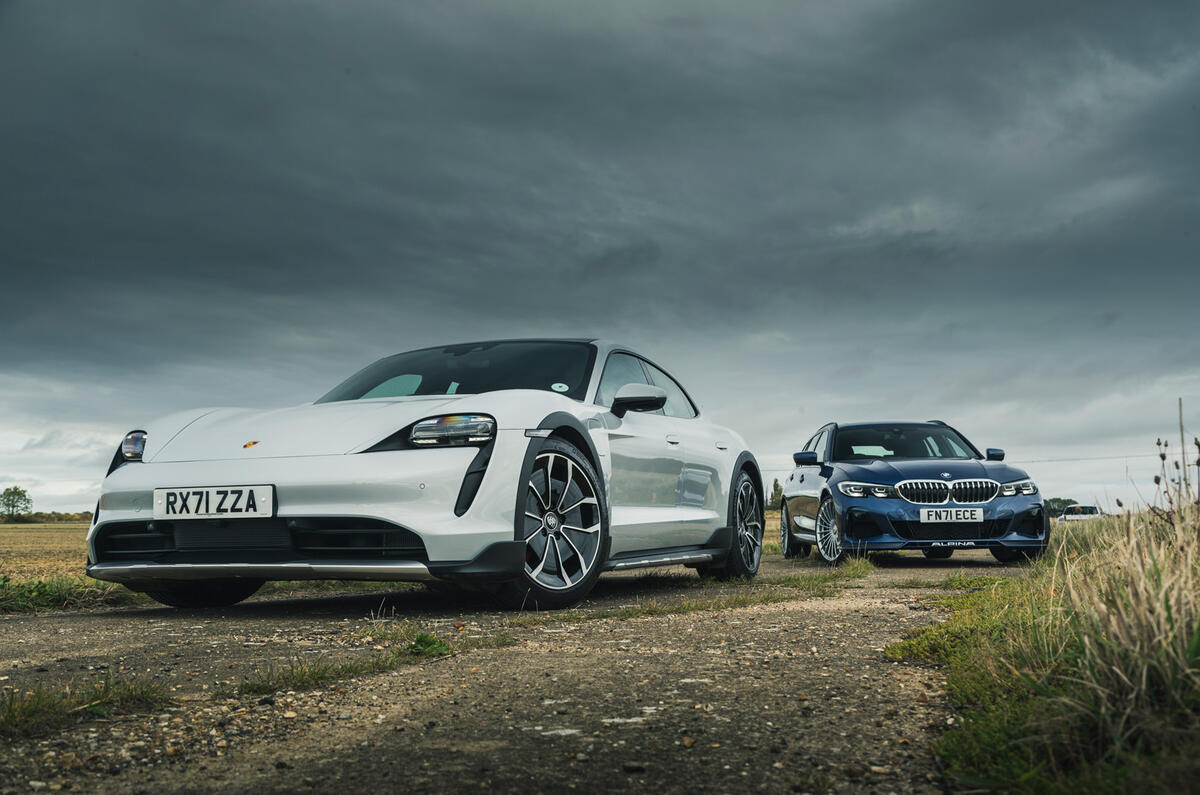
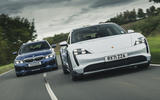
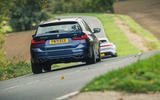
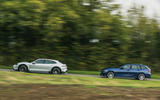
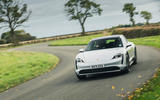
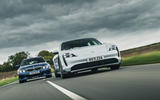
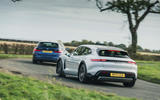
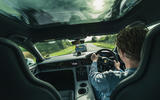
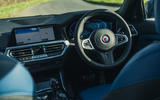
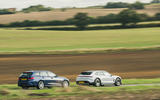
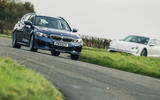
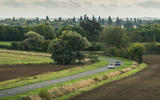
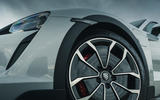
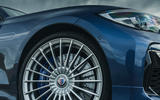
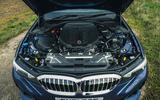
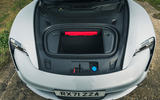
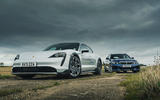






Join the debate
Add your comment
A family member will be collecting their Brand New Porsche Taycan 4S Cross Turismo in January 2022 so I will see what it's like. The Alpina is good but I have never seen one in real life (I mean any from the entire Brand ever).
For those with zero experience/knowledge of Alpina cars you should watch and listen to Steve Sutcliffe comparing:2013 Nissan GT-R vs Alpina B6 on track and road.
It is an Autocar video, and Steve is possibly the world's greatest car video host.
What do I know? - Just Google - RPrior Autocar to visit my garage
Enjoyed reading this test. Two great cars. Alpina would the one for me too, not least because pretty soon we won't be able to buy and enjoy new cars like this any more. Nicely done, Richard Lane.